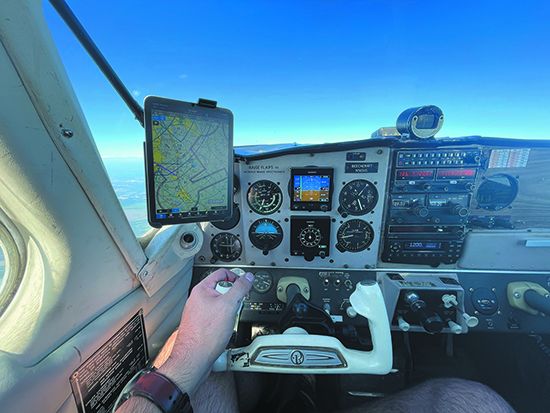This month’s panel for planning comes from loyal reader Jonathan Oliver, who has no shortage of work building an experimental kitplane and upgrading the panel on his 1966 Beech Musketeer Super III. As Oliver put it, “The Musketeer came to me with a sorely needed panel refurbishment and at one time, I had nine INOP stickers plastered in various places on the panel.”
Within 20 hours’ time in service, the vacuum pump failed (which of course took down the AI and DG), the King KX155 navcomm failed and the Mode C altitude reporting acted up. While it didn’t fail, the aircraft’s OAT gauge was inoperative because a new windshield wasn’t drilled for the temp probe, and Oliver didn’t want to drill the hole. At the same time, engine monitoring that’s better than the original single-cylinder CHT and EGT unit was the plan.
The plane had an old Narco transponder (“on borrowed time,” he said) and since the plane is based below the DFW Class B airspace, an ADS-B and transponder upgrade were priorities. Garmin’s GTX 335 made the most economical sense (especially with the FAA’s ADS-B rebate). Since Oliver bought the aircraft with a bottom-overhauled engine, a good engine monitor was also placed on the high-priority list of upgrades.
He ultimately ended up with an Electronics International CGR-30P. This also gave the green light for getting rid of the mechanical tachometer, since the EI has one built in. That opened up a three-inch instrument cutout, but it wasn’t deep enough to accommodate the engine monitor. It ended up going to the right of the radio stack, after removing the secondary VOR indicator.
WORK IN PROGRESS
For primary flight instruments, Oliver ultimately installed a couple of Garmin G5 units. After all, this is an IFR airplane, or at least it became one after dealing with all those inop instruments.
“I needed an airplane that was IFR-capable, even without GPS. North Texas in 2018 had plenty of ground-based NAVAIDs, so VOR/DME navigation was decently useful. No autopilot meant I had high minimums, but I didn’t want a 100-foot-thick overcast layer at 1000 feet AGL to keep me from flying. I also didn’t want to drop the aircraft off at a busy avionics shop. I had a great relationship with my A&P and IA, so priority was put on installing over-the-counter products versus something that required buying it from an installing dealer,” he said.
In stage one of the upgrade, Oliver installed the Garmin G5 as a turn and bank indicator (an option that is certified but perhaps rarely done), and used the GTX 335’s built-in WAAS GPS to feed it via RS-232. This made the plane IFR-legal with the AI in place. He ultimately installed a second Garmin G5 because he wanted an EHSI.
“The ‘experimental’ and ‘certified’ G5s only differ in software load and STC permission letter. Since I had permission to use the STC from my first install (and it’s not limited to use or configuration; it approves all of the STC’s data) and already installed the GMU 11 heading sensor, I simply bought a ‘bare’ G5 with install hardware and loaded it with the approved software. This saved me $1000 over buying the kit, and I used some of that to add the battery backup on the G5 DG/EHSI,” Oliver said.
What’s next? Plenty, actually. As bulletproof as it may be, it’s time to replace the King KX175B navcomm, and Oliver is eyeballing the Garmin GNC 355 GPS/comm. That’ll add GPS approach capability. It may be time to ditch the KX155, too, and Trig’s digital navcomm seems the right fit. For the finishing touches, PS Engineering’s high-quality and versatile PMA450 audio panel makes sense.
The dream upgrade includes a Garmin GFC 500 autopilot and CiES digital fuel sensors with an EI CGR-30C digital engine cluster gauge to replace the CGR-30P.
“As for that odd-man-out attitude indicator: As soon as my vacuum pump dies, it will go bye-bye in lieu of a turn coordinator, and I’ll re-class my G5 as the primary attitude indicator,” he said. Still, he’s keeping the King DME until it dies—which could be any time.


